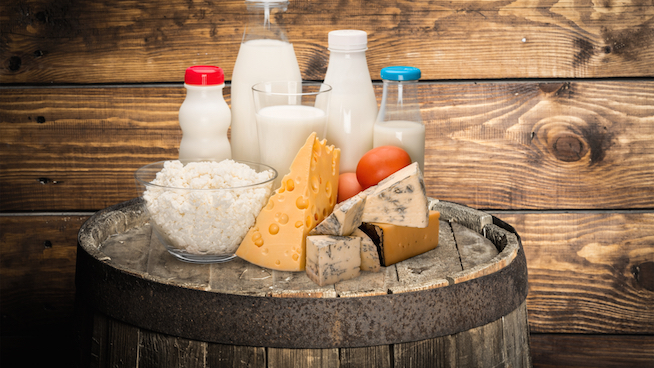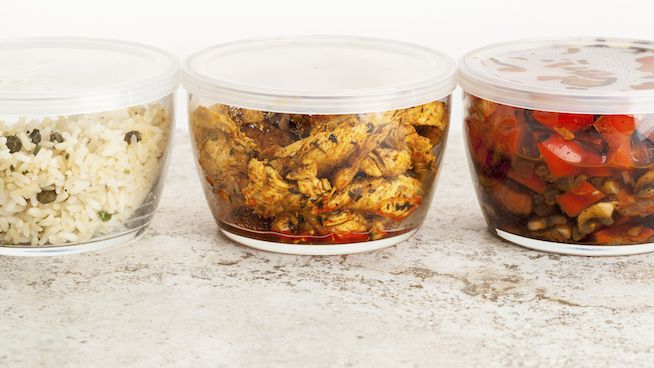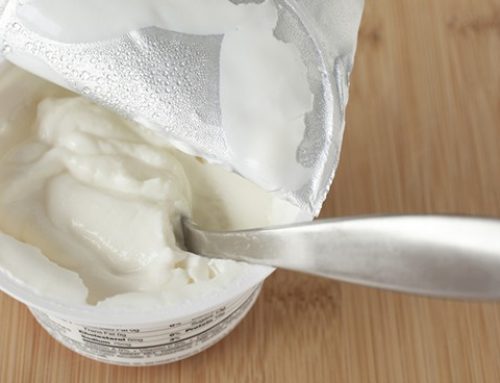What is ‘Added Sugar?’ The Addictive Ingredient That’s Killing Millions of Americans
Sugar is sabotaging the health of millions of Americans.
A report from Credit Suisse estimated that Americans collectively spend $1 trillion annually to address health issues that are “closely tied to the excess consumption of sugar.”
Though the distinction is rarely made, there’s actually one type of sugar that’s almost entirely responsible for these issues—added sugar. Added sugar is perhaps the single biggest danger in the modern American diet, and steps are being taken to better protect us against it. In the meantime, here’s what you need to know.
What is Added Sugar?
There are two types of sugar in the American diet—naturally occurring sugar and added sugar.
Naturally occurring sugars are the sugars found naturally in many foods. Foods like fruit and dairy products are often high in naturally occurring sugars. However, foods like spinach, brown rice and black beans contain them, too (albeit in smaller amounts).
Added sugars are defined as “any sugars or caloric sweeteners that are added to foods or beverages during processing or preparation.” Unlike naturally occurring sugars, which are a product of mother nature, added sugars are added to foods by humans.
Why is Added Sugar Worse Than Naturally Occurring Sugar?
A medium-size banana contains 14 grams of sugar. A serving of Oreos (three cookies) also contains 14 grams of sugar. Since they both have the same total amount of sugar, does it really matter if one is naturally occurring while the other is added?
Absolutely. One reason naturally occurring sugar is less of a concern is because of what’s bundled along with it. When you consume natural foods like fruit or vegetables, you’re not just consuming sugar; you’re getting a bevy of healthful nutrients such as fiber, vitamins and antioxidants. Fiber, particularly soluble fiber, is excellent at slowing down the body’s absorption of sugars. The fiber found in many raw foods is especially effective at this.
“Fiber slows down digestion, resulting in the sugar being absorbed more slowly,” says Brian St. Pierre, RD and nutrition coach at Precision Nutrition. This delayed digestion has numerous benefits. It gives the liver more time to metabolize the sugar, which keeps blood sugar relatively stable. This helps to avoid the rapid rise—and sudden crash—associated with a sugar high.
The same cannot be said for added sugar.
“Added sugars contribute additional calories and zero nutrients to food,” the American Heart Association states. “Over the past 30 years, Americans have steadily consumed more and more added sugars in their diets, which has contributed to the obesity epidemic.”
Diets high in added sugar have been linked to obesity, Type 2 diabetes, heart disease, tooth decay and even cancer. Foods high in added sugar are typically low in overall nutrients, making them little more than empty calories. The FDA states that “scientific data shows that it is difficult to meet nutrient needs while staying within calorie limits if you consume more than 10 percent of your total daily calories from added sugar.” 10 percent of your daily calories from added sugar sounds like a lot, but it’s frighteningly easy to surpass that total. One gram of sugar contains 4 calories. A 12-ounce can of Coca-Cola contains 39 grams of sugar (virtually all of which are added sugar). That’s 156 calories of added sugar—nearly 8 percent of your total daily calories if you’re on a 2,000 calorie a day diet.
In a day and age when the average American consumes a staggering 88 grams of added sugar per day (the AHA recommends a limit of 24 grams per day for women and 36 grams per day for men), food producers are using lots of it to ensure they’re appealing to consumers’ tastes.
“Sweetness has an almost universal appeal. So adding sugar to processed foods makes them more appetizing,” the Mayo Clinic states.
Added sugar is often used to create intensely rewarding flavors that have highly addictive potential. A 2013 study discovered that Oreos and drugs such as cocaine and morphine have similar effects on the brains of rats. The study’s authors wrote, “Rats formed an equally strong association between the pleasurable effects of eating Oreos and a specific environment as they did between cocaine or morphine and a specific environment. [The researchers] also found that eating cookies activated more neurons in the brain’s ‘pleasure center’ than exposure to drugs of abuse.”
Added sugars are omnipresent in ultra-processed foods, where Americans now get nearly 60% of their calories. It’s not just soda or Skittles, either—a serving of canned tomato sauce can contain 10 grams of added sugar, for example. According to a 2012 study, manufacturers add sugar to nearly 75% of all packaged foods sold in supermarkets.
How Do I Avoid Added Sugar?
Since added sugars are frequently found in ultra-processed foods, cutting down on those can be a smart way to scale back your added sugar intake. According to the Mayo Clinic; desserts, sodas, energy and sports drinks are the top sources of added sugars for most Americans. But as we’ve stated before, added sugar can also lurk in some unlikely places.
This is one area where the FDA’s new nutrition facts label should be a big help. You may have already noticed the label out in the wild, as the majority of food manufacturers will be required to use the new label by July 26, 2018. The new label forgoes the traditional method of just listing overall grams of sugar per serving in favor of listing both “total sugars” and the amount of included “added sugars” per serving.
“I like the change to show added sugars because they are the sugars that most people should be focusing on each day, as opposed to the naturally occurring sugars in [foods like] carrots and apples,” said Ryan Andrews, RD and nutrition coach at Precision Nutrition. If you come across a product that doesn’t have the new label, draw your eyes to the ingredients list. It’s not just sugar or high-fructose corn syrup that qualify as added sugar—fancy ingredients like agave nectar and sorghum syrup are added sugar, too. According to the University of California San Francisco, there are at least 61 different names for sugar used on labels. Knowing what to look out for can be a big help while we wait for the new nutrition labels to go into wide effect.
Photo Credit: peangdo/iStock, JTSorrell/iStock, Esdelval/iStock
READ MORE:
RECOMMENDED FOR YOU
MOST POPULAR
What is ‘Added Sugar?’ The Addictive Ingredient That’s Killing Millions of Americans
Sugar is sabotaging the health of millions of Americans.
A report from Credit Suisse estimated that Americans collectively spend $1 trillion annually to address health issues that are “closely tied to the excess consumption of sugar.”
Though the distinction is rarely made, there’s actually one type of sugar that’s almost entirely responsible for these issues—added sugar. Added sugar is perhaps the single biggest danger in the modern American diet, and steps are being taken to better protect us against it. In the meantime, here’s what you need to know.
What is Added Sugar?
There are two types of sugar in the American diet—naturally occurring sugar and added sugar.
Naturally occurring sugars are the sugars found naturally in many foods. Foods like fruit and dairy products are often high in naturally occurring sugars. However, foods like spinach, brown rice and black beans contain them, too (albeit in smaller amounts).
Added sugars are defined as “any sugars or caloric sweeteners that are added to foods or beverages during processing or preparation.” Unlike naturally occurring sugars, which are a product of mother nature, added sugars are added to foods by humans.
Why is Added Sugar Worse Than Naturally Occurring Sugar?
A medium-size banana contains 14 grams of sugar. A serving of Oreos (three cookies) also contains 14 grams of sugar. Since they both have the same total amount of sugar, does it really matter if one is naturally occurring while the other is added?
Absolutely. One reason naturally occurring sugar is less of a concern is because of what’s bundled along with it. When you consume natural foods like fruit or vegetables, you’re not just consuming sugar; you’re getting a bevy of healthful nutrients such as fiber, vitamins and antioxidants. Fiber, particularly soluble fiber, is excellent at slowing down the body’s absorption of sugars. The fiber found in many raw foods is especially effective at this.
“Fiber slows down digestion, resulting in the sugar being absorbed more slowly,” says Brian St. Pierre, RD and nutrition coach at Precision Nutrition. This delayed digestion has numerous benefits. It gives the liver more time to metabolize the sugar, which keeps blood sugar relatively stable. This helps to avoid the rapid rise—and sudden crash—associated with a sugar high.
The same cannot be said for added sugar.
“Added sugars contribute additional calories and zero nutrients to food,” the American Heart Association states. “Over the past 30 years, Americans have steadily consumed more and more added sugars in their diets, which has contributed to the obesity epidemic.”
Diets high in added sugar have been linked to obesity, Type 2 diabetes, heart disease, tooth decay and even cancer. Foods high in added sugar are typically low in overall nutrients, making them little more than empty calories. The FDA states that “scientific data shows that it is difficult to meet nutrient needs while staying within calorie limits if you consume more than 10 percent of your total daily calories from added sugar.” 10 percent of your daily calories from added sugar sounds like a lot, but it’s frighteningly easy to surpass that total. One gram of sugar contains 4 calories. A 12-ounce can of Coca-Cola contains 39 grams of sugar (virtually all of which are added sugar). That’s 156 calories of added sugar—nearly 8 percent of your total daily calories if you’re on a 2,000 calorie a day diet.
In a day and age when the average American consumes a staggering 88 grams of added sugar per day (the AHA recommends a limit of 24 grams per day for women and 36 grams per day for men), food producers are using lots of it to ensure they’re appealing to consumers’ tastes.
“Sweetness has an almost universal appeal. So adding sugar to processed foods makes them more appetizing,” the Mayo Clinic states.
Added sugar is often used to create intensely rewarding flavors that have highly addictive potential. A 2013 study discovered that Oreos and drugs such as cocaine and morphine have similar effects on the brains of rats. The study’s authors wrote, “Rats formed an equally strong association between the pleasurable effects of eating Oreos and a specific environment as they did between cocaine or morphine and a specific environment. [The researchers] also found that eating cookies activated more neurons in the brain’s ‘pleasure center’ than exposure to drugs of abuse.”
Added sugars are omnipresent in ultra-processed foods, where Americans now get nearly 60% of their calories. It’s not just soda or Skittles, either—a serving of canned tomato sauce can contain 10 grams of added sugar, for example. According to a 2012 study, manufacturers add sugar to nearly 75% of all packaged foods sold in supermarkets.
How Do I Avoid Added Sugar?
Since added sugars are frequently found in ultra-processed foods, cutting down on those can be a smart way to scale back your added sugar intake. According to the Mayo Clinic; desserts, sodas, energy and sports drinks are the top sources of added sugars for most Americans. But as we’ve stated before, added sugar can also lurk in some unlikely places.
This is one area where the FDA’s new nutrition facts label should be a big help. You may have already noticed the label out in the wild, as the majority of food manufacturers will be required to use the new label by July 26, 2018. The new label forgoes the traditional method of just listing overall grams of sugar per serving in favor of listing both “total sugars” and the amount of included “added sugars” per serving.
“I like the change to show added sugars because they are the sugars that most people should be focusing on each day, as opposed to the naturally occurring sugars in [foods like] carrots and apples,” said Ryan Andrews, RD and nutrition coach at Precision Nutrition. If you come across a product that doesn’t have the new label, draw your eyes to the ingredients list. It’s not just sugar or high-fructose corn syrup that qualify as added sugar—fancy ingredients like agave nectar and sorghum syrup are added sugar, too. According to the University of California San Francisco, there are at least 61 different names for sugar used on labels. Knowing what to look out for can be a big help while we wait for the new nutrition labels to go into wide effect.
Photo Credit: peangdo/iStock, JTSorrell/iStock, Esdelval/iStock
READ MORE:











